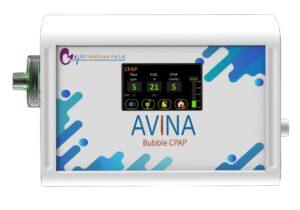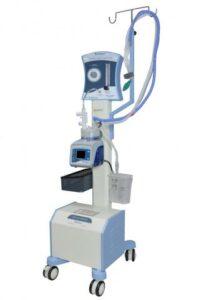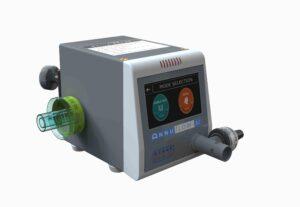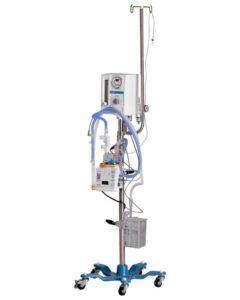Welcome to the blog on Bubble CPAP—a remarkable respiratory therapy device used to treat various respiratory conditions. In this comprehensive blog, we will delve into the world of Bubble CPAP, exploring its uses, advantages, working mechanism, setup process, troubleshooting tips, and more. Whether you’re a healthcare professional, a patient, or simply curious about respiratory therapy, this blog will equip you with valuable insights to understand and optimize the use of Bubble CPAP.
Understanding Bubble CPAP
Bubble CPAP is a revolutionary respiratory therapy technique that has gained popularity in the medical field. It is important to have a clear understanding of Bubble CPAP to appreciate its benefits fully. Bubble CPAP involves the delivery of continuous positive airway pressure to patients with respiratory conditions, such as respiratory distress syndrome (RDS) or bronchopulmonary dysplasia (BPD). This non-invasive therapy provides significant support to patients’ breathing and oxygenation.
Bubble CPAP utilizes a simple yet effective setup consisting of a water column and a specialized device that generates a continuous flow of air and oxygen. The flow of air creates bubbles within the water column, which serves as a reservoir of pressure. These bubbles deliver constant positive pressure to the patient’s airways, preventing them from collapsing during exhalation. The pressure helps keep the lungs’ small air sacs open, facilitating the exchange of oxygen and carbon dioxide.
How Does Bubble CPAP Work?
Understanding the working mechanism of Bubble CPAP is crucial to appreciate its effectiveness in respiratory therapy. When a patient receives Bubble CPAP, the generated positive pressure keeps the airways open, allowing for improved oxygenation and reduced work of breathing.
The air and oxygen mixture flows through the Bubble CPAP device and enters the water column, creating bubbles. As the bubbles rise to the surface, they generate a constant positive pressure. This pressure is transmitted to the patient’s airways through nasal prongs or a mask, depending on the patient’s age and condition.
The continuous positive pressure in the airways helps to open collapsed or partially collapsed air sacs in the lungs. By maintaining pressure during both inhalation and exhalation, Bubble CPAP enhances lung compliance and oxygenation. This therapy reduces the effort required for breathing, allowing patients to breathe more comfortably and efficiently.
The use of Bubble CPAP is particularly beneficial for premature infants with respiratory distress syndrome (RDS) or bronchopulmonary dysplasia (BPD). It provides gentle respiratory support without the need for invasive interventions, such as intubation and mechanical ventilation. Bubble CPAP promotes the natural process of breathing and facilitates the healing of fragile lung tissue.
Advantages of Bubble CPAP
Bubble CPAP offers numerous advantages as a respiratory therapy technique. Its non-invasive nature, ease of use, and effectiveness make it a preferred choice in many healthcare settings. Let’s explore the key advantages of Bubble CPAP:
- Non-Invasive Therapy: Unlike invasive procedures such as intubation and mechanical ventilation, Bubble CPAP provides respiratory support without the need for invasive interventions. This reduces the risk of complications and promotes a more comfortable experience for the patient.
- Improved Oxygenation: Bubble CPAP helps improve oxygenation by keeping the airways open and preventing collapse. This enhanced oxygenation supports vital organ function and promotes better overall health.
- Reduced Work of Breathing: By maintaining positive pressure in the airways, Bubble CPAP reduces the effort required for breathing. This allows patients, especially premature infants, to breathe more comfortably and efficiently.
- Gentle and Gradual Pressure: Bubble CPAP delivers a gentle and gradual pressure to the airways, minimizing discomfort and trauma. It promotes natural breathing patterns and helps prevent lung injury.
- Avoidance of Intubation: Bubble CPAP can often help avoid the need for invasive procedures like intubation and mechanical ventilation. This reduces the risk of associated complications and supports the infant’s respiratory development.
- Ease of Setup and Monitoring: Bubble CPAP systems are relatively easy to set up and monitor. Healthcare professionals can adjust the pressure levels and monitor the patient’s response to therapy easily.
Bubble CPAP’s advantages make it a valuable tool in the treatment of respiratory conditions, particularly in neonatal intensive care units (NICUs) and pediatric wards. Its non-invasive nature, effectiveness, and ability to support the natural breathing process contribute to improved patient outcomes and better overall respiratory care.
When Is Bubble CPAP Used?
Bubble CPAP is commonly used in various medical scenarios where patients require respiratory support. Understanding the situations and conditions in which Bubble CPAP’s is employed can help healthcare professionals determine the appropriate treatment approach. Let’s explore the common indications for Bubble CPAP’s use:
- Respiratory Distress Syndrome (RDS): Bubble CPAP is frequently utilized in the management of premature infants with RDS. This condition occurs due to the underdevelopment of the lungs in premature babies, leading to breathing difficulties. Bubble CPAP helps open the airways and improves oxygenation in these infants.
- Bronchopulmonary Dysplasia (BPD): BPD is a chronic lung disease that primarily affects premature infants who have required prolonged mechanical ventilation. Bubble CPAP can be used as a weaning tool, gradually transitioning the infant from invasive ventilation to non-invasive support while promoting lung development.
- Transient Tachypnea of the Newborn (TTN): TTN is a self-limiting respiratory condition that affects newborns shortly after birth. Bubble CPAP can be employed to assist with the clearance of excess fluid from the lungs and provide respiratory support until the condition resolves.
- Neonatal Pneumonia: Bubble CPAP may be used as part of the management strategy for neonates with pneumonia. It aids in maintaining adequate oxygenation and supports respiratory function while appropriate antimicrobial therapy is administered.
- Meconium Aspiration Syndrome (MAS): In cases where infants inhale meconium (the baby’s first stool) during birth, Bubble CPAP can be used to improve lung function, prevent airway collapse, and enhance oxygenation.
- Post-extubation Support: After the removal of an endotracheal tube, Bubble CPAP can be employed to provide post-extubation respiratory support, facilitating a smoother transition to non-invasive ventilation or spontaneous breathing.
Step-by-Step Guide to Bubble CPAP Setup
Proper setup of a Bubble CPAP’s system is crucial for its effective and safe use in delivering respiratory support. Here is a step-by-step guide to help you navigate the setup process:
- Gather the necessary equipment: Collect all the required equipment, including a Bubble CPAP machine, water trap, heated wire circuit, nasal interface (prongs or mask), oxygen source, and appropriate tubing.
- Prepare the Bubble CPAP machine: Ensure the machine is clean and in good working condition. Connect it to a power source and make sure the alarms and pressure settings are properly adjusted.
- Attach the water trap: Connect the water trap to the outlet of the Bubble CPAP machine. The water trap helps prevent water from entering the machine and ensures the delivery of dry air to the patient.
- Connect the heated wire circuit: Attach the heated wire circuit to the water trap. This circuit helps warm and humidify the air, promoting patient comfort and reducing the risk of airway irritation.
- Set up the nasal interface: Choose an appropriate nasal interface, either prongs or a mask, based on the patient’s age and size. Ensure the interface is clean and properly fitted. Connect it to the heated wire circuit.
- Connect the oxygen source: Connect the oxygen source, such as an oxygen cylinder or wall outlet, to the Bubble CPAP machine. Adjust the oxygen flow rate according to the prescribed level.
- Attach the tubing: Connect the tubing from the Bubble CPAP machine to the nasal interface. Ensure secure connections and check for any leaks.
- Monitor and adjust settings: Turn on the Bubble CPAP machine and monitor the pressure levels, oxygen saturation, and patient comfort. Adjust the settings as necessary to achieve the desired respiratory support.
- Educate the caregivers: Provide thorough instructions to the caregivers or healthcare professionals responsible for monitoring and managing the Bubble CPAP system. Teach them about troubleshooting common issues and ensuring patient safety.
- Regularly assess and maintain the setup: Regularly assess the Bubble CPAP setup, including checking for proper functioning, tubing integrity, and cleanliness. Follow the manufacturer’s recommendations for maintenance and replace components as needed.
Choosing the Right Bubble CPAP Machine
Selecting the appropriate Bubble CPAP’s machine is essential to ensure optimal respiratory therapy outcomes. Consider the following factors when choosing the right machine for your needs:
- Patient Age and Size: Bubble CPAP machines come in different sizes and specifications to accommodate patients of various ages and sizes. Ensure that the machine you choose is suitable for the specific patient population you will be treating.
- Pressure Range: Evaluate the pressure range capabilities of the Bubble CPAP machine. It should be able to deliver the required pressure levels as prescribed by the healthcare provider. Ensure that the machine offers adjustable pressure settings to accommodate individual patient needs.
- Ease of Use: Find a Bubble CPAP machine that offers user-friendly operation and ease of use. Features such as intuitive controls, clear interface, and easy setup can streamline the treatment process and reduce the risk of errors.
- Alarm System: Consider the alarm system of the Bubble CPAP machine. It should have audible and visible alarms to alert healthcare providers of any deviations from the set parameters. The alarms should be customizable and easily adjustable.
- Portability: If mobility is a concern, opt for a portable Bubble CPAP machine that is lightweight and easy to transport. This is particularly important for home healthcare settings or situations where mobility is required.
- Durability and Reliability: Choose a Bubble CPAP machine from a reputable manufacturer known for producing durable and reliable medical equipment. The machine should be able to withstand continuous use and provide consistent performance.
- Additional Features: Consider any additional features or functionalities that may enhance the treatment experience. This could include built-in humidification, integrated monitoring capabilities, or compatibility with other respiratory support devices.
- Budget Considerations: Evaluate the cost of the Bubble CPAP machine and determine if it aligns with your budget constraints. However, prioritize quality and functionality over price alone to ensure the best patient care.
- Clinical Support and Training: Check if the manufacturer provides adequate clinical support and training resources. This can include user manuals, instructional videos, and access to technical support for troubleshooting.
- Certifications and Compliance: Ensure that the Bubble CPAP machine meets all relevant safety and regulatory standards. Look for certifications such as FDA approval or CE marking to ensure compliance with industry regulations.
Bubble CPAP Safety Tips
Ensuring the safe use of Bubble CPAP’s is crucial to prevent complications and optimize patient care. Follow these important safety tips when utilizing Bubble CPAP’s:
- Proper Training and Education: Healthcare professionals should receive comprehensive training on Bubble CPAP setup, operation, and safety protocols. Familiarize yourself with the manufacturer’s guidelines and recommended procedures.
- Monitoring and Assessment: Regularly monitor the patient’s vital signs, including respiratory rate, heart rate, and oxygen saturation levels. Continuously assess the patient’s response to Bubble CPAP therapy and adjust settings as needed.
- Secure Tubing Connections: Ensure that all tubing connections are securely attached and free from leaks. Regularly inspect the connections and replace any damaged or worn-out components to maintain proper air pressure delivery.
- Humidification Management: Adequate humidification is crucial to prevent drying of the respiratory mucosa. Regularly check and adjust the humidification levels according to the patient’s needs, and monitor for signs of excessive dryness or excessive moisture buildup.
- Maintain Sterility: Follow strict infection control practices during Bubble CPAP setup and maintenance. Use sterile water and adhere to aseptic techniques when handling equipment to minimize the risk of contamination and infection.
- Patient Comfort and Positioning: Ensure that the patient is comfortable and properly positioned during Bubble CPAP therapy. Optimize head and neck alignment to facilitate proper airway patency and reduce the risk of complications.
- Regular Equipment Inspection: Perform routine inspections of the Bubble CPAP machine and accessories. Promptly replace any faulty components to ensure safe and effective therapy.
- Alarm Awareness: Familiarize yourself with the different alarms and alerts of the Bubble CPAP machine. Understand their meanings and respond promptly to any alarms indicating pressure deviations, disconnections, or other abnormalities.
- Emergency Preparedness: Be prepared for potential emergencies during Bubble CPAP therapy. Ensure that emergency equipment, such as manual resuscitators and suction devices, is readily available and functional.
- Documentation and Communication: Maintain accurate documentation of Bubble CPAP therapy, including settings, patient responses, and any incidents or changes in treatment. Communicate effectively with the healthcare team to ensure continuity of care.
Prioritize patient safety at all times and seek immediate assistance or guidance in case of any concerns or issues.
Troubleshooting Common Bubble CPAP Issues
While Bubble CPAP’s is generally a reliable and effective therapy, it’s important to be prepared for potential challenges that may arise. Here are some common issues that can occur during Bubble CPAP therapy and practical troubleshooting tips:
- Air Leak from Tubing Connections: If you notice air leakage from the tubing connections, ensure that all connections are tightly secured. Check for any damaged or worn-out connectors and replace them if necessary. Make sure the water level in the bubble column is maintained properly to prevent excess air from entering the system.
- Water Overflow in the Bubble Column: If the water level in the bubble column rises too high and starts overflowing, reduce the flow of oxygen or air entering the system. Adjust the flow rate to achieve a gentle bubbling action without excessive water movement. It’s important to maintain the optimal water level to ensure proper humidification.
- Inadequate Pressure Delivery: If the desired airway pressure is not being achieved, check for any obstructions or kinks in the tubing. Ensure that the water level in the bubble column is appropriate and that the flow of oxygen or air is sufficient. Adjust the flow rate or increase the oxygen concentration as needed, while closely monitoring the patient’s response.
- Excessive Noise: Excessive noise from the Bubble CPAP machine can be distracting and uncomfortable for the patient. Check for loose connections or components and ensure they are securely tightened. If the noise persists, consider replacing any worn-out or malfunctioning parts of the machine.
- Skin Irritation or Pressure Sores: Proper patient positioning and regular skin assessment are crucial to prevent skin irritation and pressure sores. Ensure that the patient is well-supported and that pressure points are relieved. Regularly inspect the skin and provide appropriate padding or cushioning to protect vulnerable areas.
- Alarm Activation: If alarms are frequently activated, carefully review the alarm settings and ensure they are appropriately calibrated. Check for any disconnections, leaks, or pressure fluctuations that may trigger the alarms. Respond promptly to alarms and address any underlying issues to maintain the continuity of therapy.
- Inadequate Humidification: If the patient experiences dryness or discomfort, check the humidification system. Ensure that the water level is sufficient, and consider adjusting the temperature and humidity settings to meet the patient’s needs. Monitor the patient’s respiratory status and adjust humidification as required.
Remember, troubleshooting should always be performed by trained healthcare professionals following the specific guidelines provided by the manufacturer. If you encounter persistent issues or are unsure about how to resolve a problem, consult with your healthcare team or the equipment manufacturer for further assistance.
Bubble CPAP from Leading Indian Manufacturers
AVINA Bubble CPAP Unit
The AVINA Bubble CPAP Unit, manufactured by AVI Healthcare Pvt. Ltd., is a cutting-edge medical device designed to provide effective respiratory support for newborns with infant respiratory distress syndrome. As a leading manufacturer and global supplier of Bubble CPAP machines in India, AVI Healthcare delivers high-quality and innovative solutions for neonatal care.
AVI Healthcare presents the Infant Bubble CPAP machine, employing a non-invasive ventilation technique to support newborns experiencing respiratory challenges. By applying gentle air pressure, it helps keep the airways open during expiration, ensuring optimal lung volumes. The unique feature of this device lies in its ability to maintain pressure within the circuit by submerging the expiratory tubing in water. This mechanism effectively prevents the build-up of excessive pressures and promotes safe respiratory therapy for infants.
One notable feature of the AVINA Bubble CPAP Unit is its hybrid design, which combines Bubble CPAP with High Flow Nasal Cannula (HFNC) capabilities. This versatile functionality allows healthcare professionals to address the respiratory needs of both newborns with infant respiratory distress syndrome and hypoxic patients. The HFNC mode is particularly useful for individuals experiencing cyanosis, characterized by blue skin, lips, and fingernails, as well as anemic patients. The device administers blended and humidified oxygen through short nasal prongs or a nasal mask, effectively boosting blood oxygen levels while maintaining saturation.
The AVINA Bubble CPAP Unit prioritizes convenience and user-friendliness. With turbine-driven technology, it delivers reliable performance without a compressor, making it portable and lightweight. The 4.3″ touch screen user interface enables intuitive navigation and control, facilitating easy adjustment of settings and parameter monitoring by healthcare professionals.
Safety is paramount when it comes to respiratory support, and the AVINA Bubble CPAP Unit incorporates several essential features to ensure patient well-being. The device is equipped with audio-visual alarms that alert healthcare providers to pressure high/low, flow high/low, FiO2 high/low, and patient disconnect events. These alarms enhance patient safety by providing timely notifications of any abnormalities.
NeoPAP 505
Neokraft Medical Private Limited, a renowned manufacturer and supplier of bubble CPAP devices in India, introduces the NeoPAP 505 Bubble CPAP unit. Designed specifically for newborn babies, this advanced system offers reliable respiratory support and ensures optimal care for infants in need.
The NeoPAP 505 Bubble CPAP unit by Neokraft Medical Private Limited is equipped with various features that enhance its performance and functionality. The device incorporates an inbuilt air/oxygen blender, a bubble generator with a pressure manifold, a heated breathing circuit, and a medical-grade air compressor. This comprehensive system ensures the precise delivery of FiO2 (fraction of inspired oxygen) to meet the specific respiratory needs of newborns. The servo humidifier, available in both invasive and non-invasive modes, further facilitates respiratory therapy for neonates to adults.
One notable feature of the NeoPAP 505 is its compact and unique air/oxygen blender. This blender enables healthcare providers to maintain the FiO2 levels accurately, ranging from 21% to 100%. Additionally, the device includes an oxygen flow meter regulator, allowing for direct delivery of oxygen through a central pipeline. This feature enhances convenience and flexibility in oxygen administration.
The NeoPAP 505 Bubble CPAP unit ensures a reliable and consistent airflow with its low noise medical-grade air compressor. This compressor operates efficiently, providing the necessary air pressure for optimal respiratory support while minimizing noise disruptions. The device also features a bubble generator, which plays a crucial role in generating the bubble CPAP therapy that helps maintain airway pressure and supports effective breathing.
Safety and precision are paramount in respiratory care, and the NeoPAP 505 incorporates several essential features to ensure patient well-being. The device is equipped with an air/oxygen mixer that includes a high-pressure protection system. This system helps regulate the air and oxygen mixture, maintaining the desired FiO2 levels and preventing excessive pressure build-up. Furthermore, the device is equipped with a low-pressure air compressor with a bacterial filter, ensuring the delivery of clean and sterile air to the patient.
Annuflow-BC
Introducing Annuflow-BC, a user-friendly respiratory gas delivery system manufactured by Kyron Healthcare Pvt. Ltd. in India. This innovative device is designed to provide efficient and reliable respiratory support to spontaneously breathing patients, catering specifically to the needs of neonatal and pediatric patients.
Annuflow-BC is equipped with a range of features that enhance its usability and effectiveness. The device incorporates a fully touch-enabled interface, allowing healthcare professionals to navigate and control the system with ease. This user-friendly design promotes seamless operation and efficient management of respiratory therapy.
One notable feature of Annuflow-BC is its real-time oxygen concentration display. This display provides healthcare providers with accurate and immediate information about the delivered oxygen concentration, enabling them to monitor and adjust the therapy accordingly. This feature enhances precision and ensures optimal oxygenation for patients.
The device also offers optimal humidity delivery within a temperature range of 31 to 41 degrees Celsius. Maintaining appropriate humidity levels is crucial for respiratory therapy, as it helps to prevent airway dryness and discomfort for patients. Annuflow-BC ensures that the delivered respiratory gases are properly humidified, promoting patient comfort and effective treatment outcomes.
With a wide flow rate range of 2 to 25 liters per minute, Annuflow-BC provides flexibility in adjusting the airflow according to individual patient requirements. This feature enables healthcare professionals to tailor the respiratory support to the specific needs of neonatal and pediatric patients, ensuring optimal therapy delivery.
Safety is of utmost importance in respiratory care, and Annuflow-BC incorporates an enhanced alarm system to ensure patient well-being. The device is equipped with alarms that alert healthcare providers in case of any deviations or abnormalities in the therapy, such as low or high flow rates, oxygen concentration variations, or system malfunctions. These alarms serve as important safeguards, enabling prompt intervention and ensuring the safety and efficacy of respiratory therapy.
nice 5060 With SS Stand
nice 5060 Bubble CPAP System with SS stand, manufactured by nice Neotech Medical Systems Pvt. Ltd. in India. This unique bubble generating system is designed to provide consistent and accurate delivery of CPAP (Continuous Positive Airway Pressure) to patients, offering reliable respiratory support in various clinical settings.
The nice 5060 Bubble CPAP System features an active mechanical Air oxygen blender, allowing precise control of FiO2 gas proportions from 21% to 100%. The highly calibrated blender ensures the accurate delivery of oxygen, promoting effective respiratory therapy for patients. This feature enables healthcare professionals to tailor the oxygen concentration according to individual patient needs, ensuring optimal treatment outcomes.
One notable feature of the nice 5060 Bubble CPAP System is the power failure alarm. This alarm is designed to alert the user or clinician in the event of a power outage, ensuring timely intervention and patient safety. This feature adds an extra layer of security to the system, enabling healthcare providers to respond promptly and ensure continuous respiratory support.
The preset pressure manifold of the nice 5060 Bubble CPAP System is another significant feature that contributes to accurate therapy delivery and patient safety. The manifold releases any additional pressure beyond the set pressure, ensuring precise and consistent delivery of therapeutic pressure to the patient. This feature enhances the efficacy of the CPAP therapy and promotes patient comfort.
The bubble generator in the nice 5060 Bubble CPAP System provides a convenient means of applying positive airway pressure, freeing clinicians to focus on patient care rather than device operation. This feature simplifies the usage of the system and streamlines workflow in healthcare settings, enhancing efficiency and improving patient care.
An overflow container integrated into the bubble generator collects excess water, ensuring uninterrupted treatment by preventing the device from stopping for the collection of excess water. This feature allows for continuous therapy delivery, optimizing patient comfort and minimizing interruptions during treatment sessions.
The nice 5060 Bubble CPAP System offers both invasive and non-invasive modes of operation, providing flexibility and adaptability based on patient requirements and comfort. Healthcare professionals can choose the appropriate mode of operation to suit individual patient needs, ensuring personalized and effective respiratory support.
Medzell: A Futuristic B2B Platform for Promoting Indian Medical Devices in Emerging Markets
Medzell is a futuristic B2B platform that connects manufacturers of Indian medical devices with emerging markets worldwide. It serves as a bridge between suppliers and buyers, facilitating trade and promoting the adoption of innovative medical technologies. With its extensive network and expertise, Medzell aims to revolutionize the healthcare industry by providing access to high-quality, cost-effective medical devices.
By leveraging the power of digital technology, Medzell offers a seamless and efficient procurement process for healthcare providers and distributors. It provides a comprehensive product catalog, allowing users to browse and select the most suitable Bubble CPAP machines based on their specific requirements. The platform offers detailed product information, including specifications, features, and user reviews, enabling informed decision-making.






